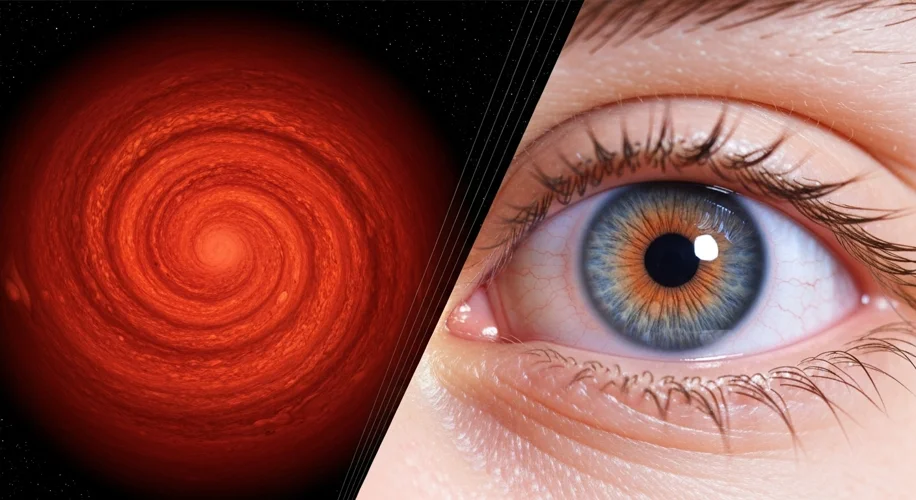It’s fascinating how the vastness of space can connect to the most intimate details of our own bodies. Today, let’s take a journey from the swirling clouds of Jupiter to the very pupils that allow us to see it all. It’s a reminder that the science of our planet is deeply intertwined with the universe beyond.
Did you know that Jupiter’s Great Red Spot, a storm that’s been raging for centuries, is a colossal atmospheric phenomenon? It’s an anticyclonic storm, larger than Earth itself, driven by complex atmospheric dynamics. The swirling gases, the incredible pressures, and the sheer scale of it all are mind-boggling. While we don’t have storms of that magnitude on Earth, understanding Jupiter’s atmosphere helps us refine our own climate models. The principles of fluid dynamics, heat transfer, and atmospheric chemistry at play on Jupiter are, in many ways, amplified versions of what we study right here.
Think about the vibrant colors we see in Jupiter’s clouds. These colors come from different chemicals, like ammonia and water ice, suspended at various altitudes. The way sunlight interacts with these particles is what creates the beautiful bands and swirls we observe. It’s a cosmic light show, powered by the sun and shaped by atmospheric composition.
Now, let’s zoom in – way in – to something much closer to home: your own eyes. Specifically, your pupils. These dark circles in the center of your iris are not just there for looks; they are nature’s own adaptive aperture. When light is bright, your pupils constrict, becoming smaller, to limit the amount of light entering your eye and protect the sensitive retina. This is why in bright sunlight, your pupils look like tiny pinpricks.
Conversely, in dim light, your pupils dilate, growing larger. This allows more light to enter, maximizing your ability to see in low-light conditions. It’s an automatic, biological response that happens without you even thinking about it. The muscles in your iris, the colored part of your eye, contract or relax to control pupil size. This amazing biological mechanism is a testament to efficient design.
What’s the connection between a giant storm on Jupiter and the muscles controlling your pupil? It all comes down to light and how it interacts with matter, and how living organisms have evolved to perceive it. The same physics governing how sunlight scatters off Jupiter’s atmospheric particles is, in a much smaller way, related to how light enters your eye. The intensity of light, whether from a distant sun illuminating a gas giant or a lamp in your room, triggers responses in both the vast atmosphere and the delicate biology of your eye.
Understanding these connections isn’t just about appreciating the wonders of science; it helps us appreciate our place in the universe. It also highlights how fundamental scientific principles apply across vastly different scales. From the grandest planetary atmospheres to the most intricate biological systems, the dance of light and matter shapes our reality. It’s a beautiful reminder that everything is connected.

